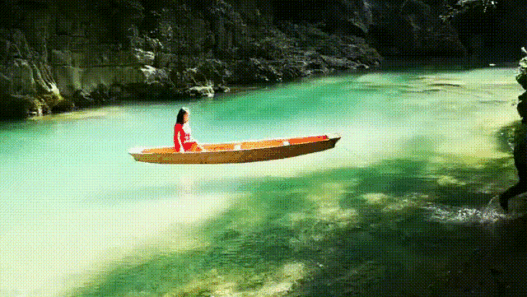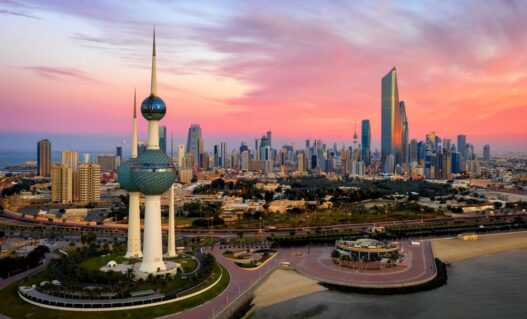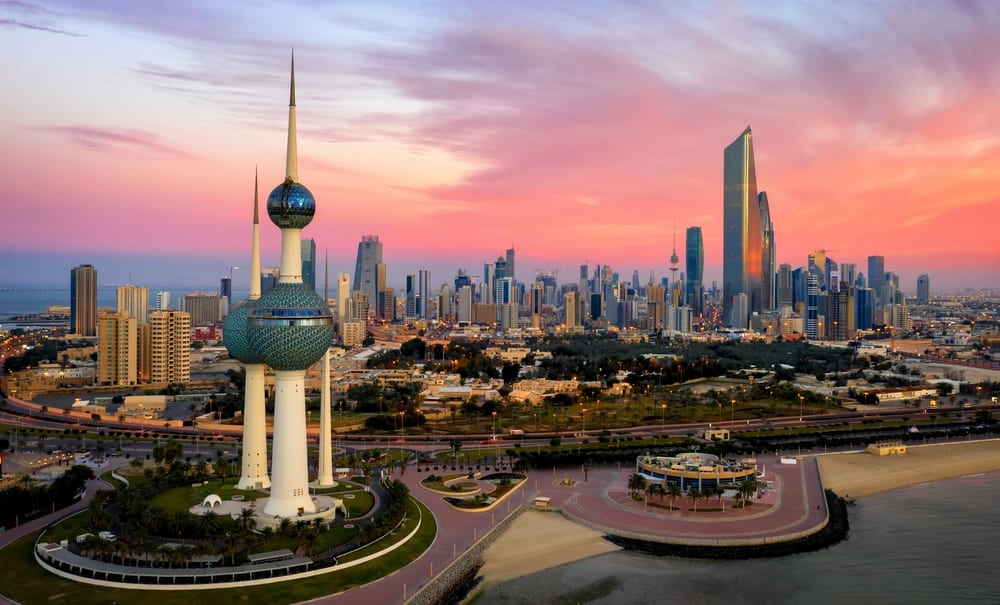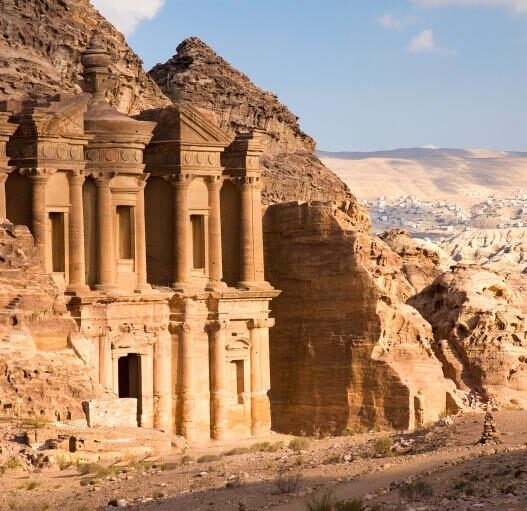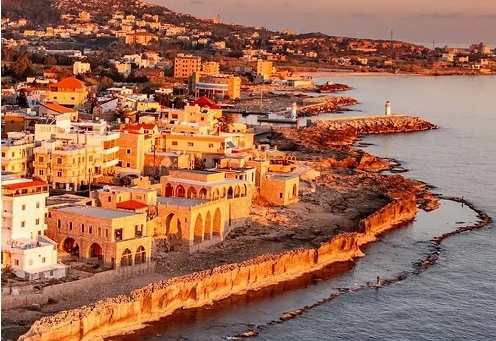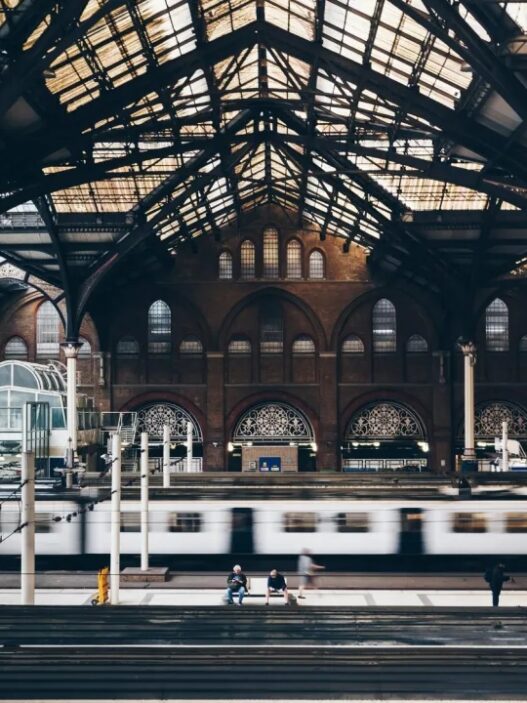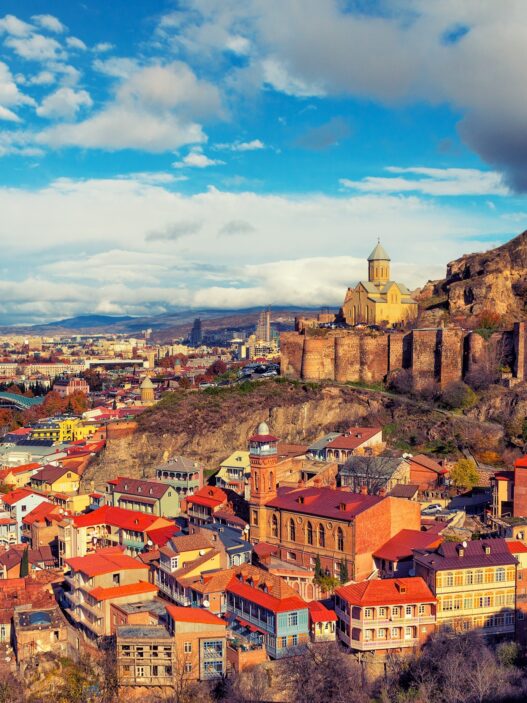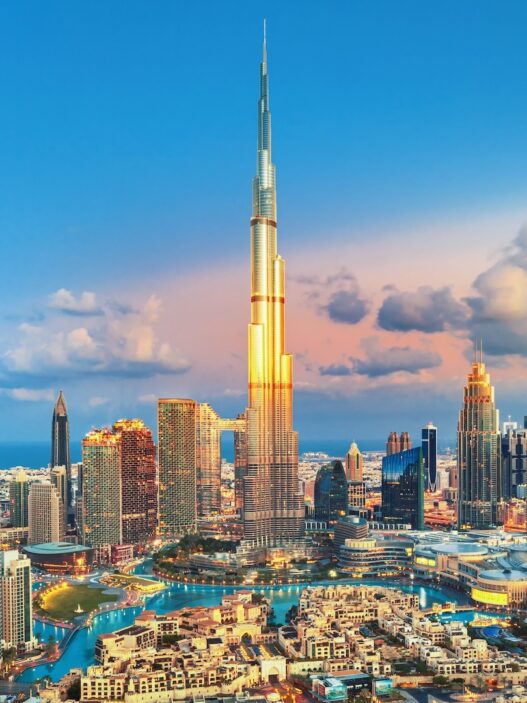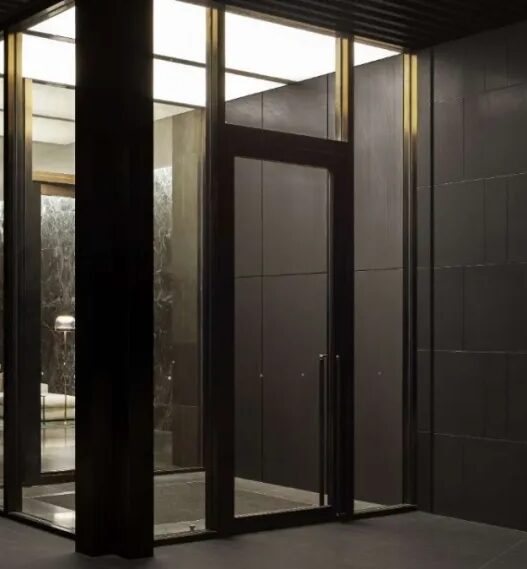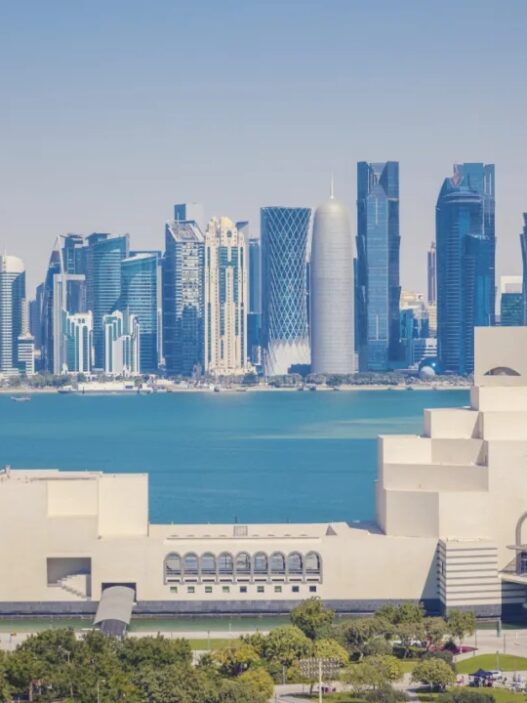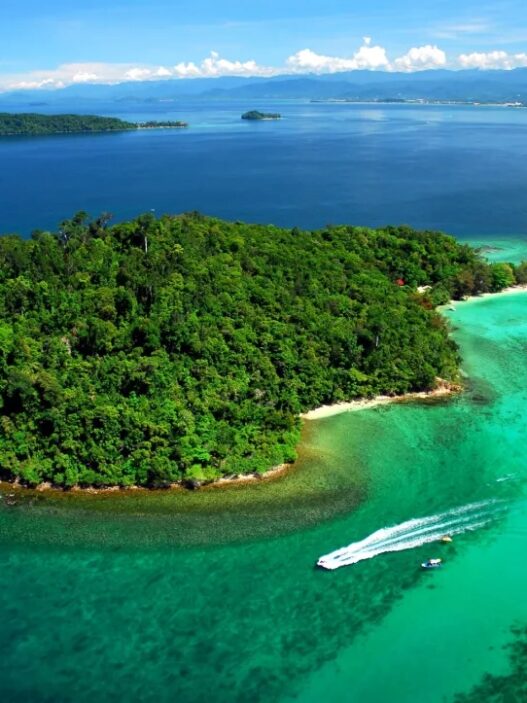A country where you can enjoy the freedom of doing nothing, time seems to flow freely and leisurely.
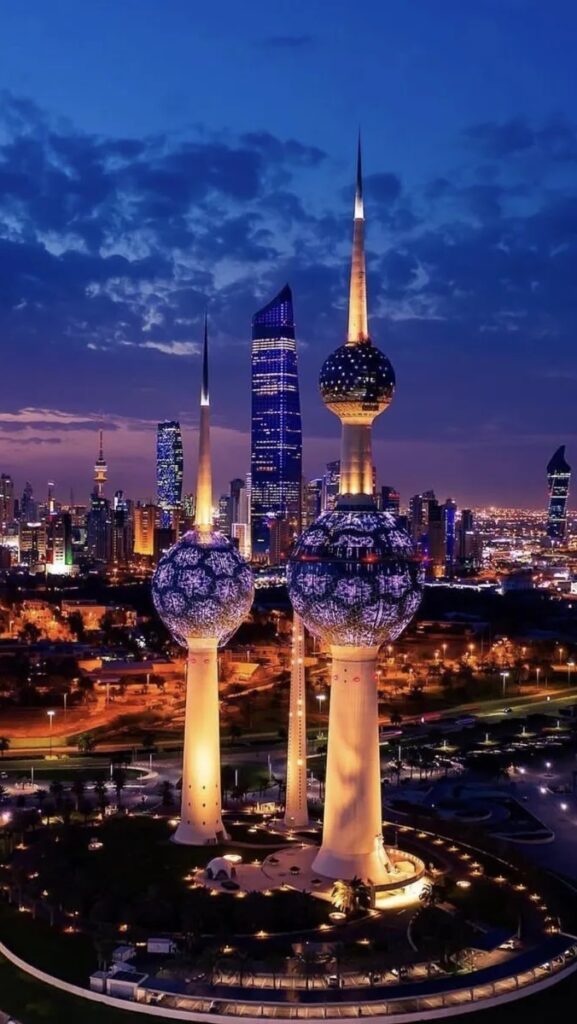
Must-Visit Attractions
The Grand Mosque of Kuwait
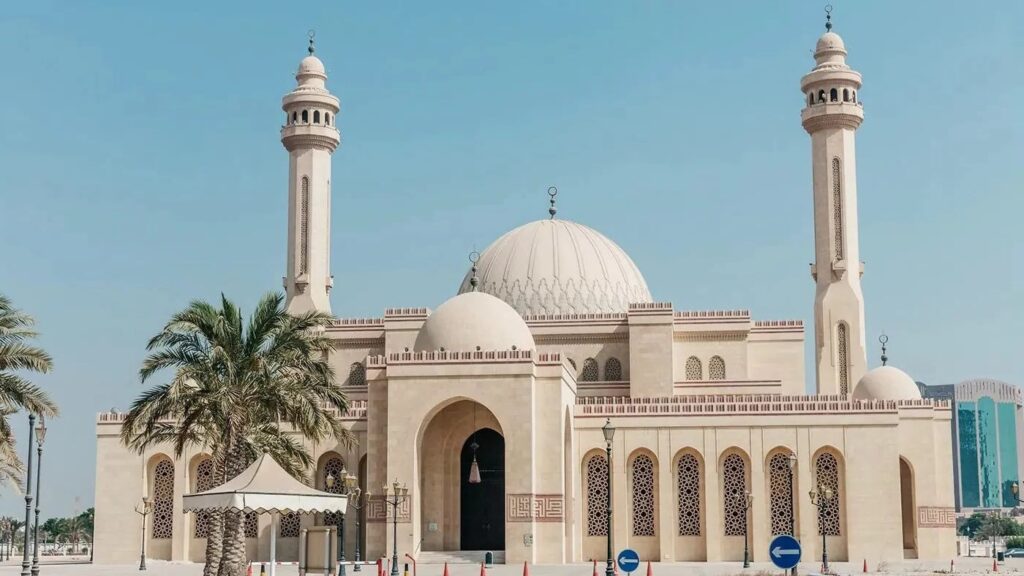
One of the most important religious sites in Kuwait and a must-visit for tourists. Its unique architecture blends traditional Islamic elements with modern design concepts. The interior is beautifully decorated with a massive dome and intricate carvings, allowing visitors to learn about Islamic culture and history while admiring the magnificent architectural landscape.
Kuwait Towers
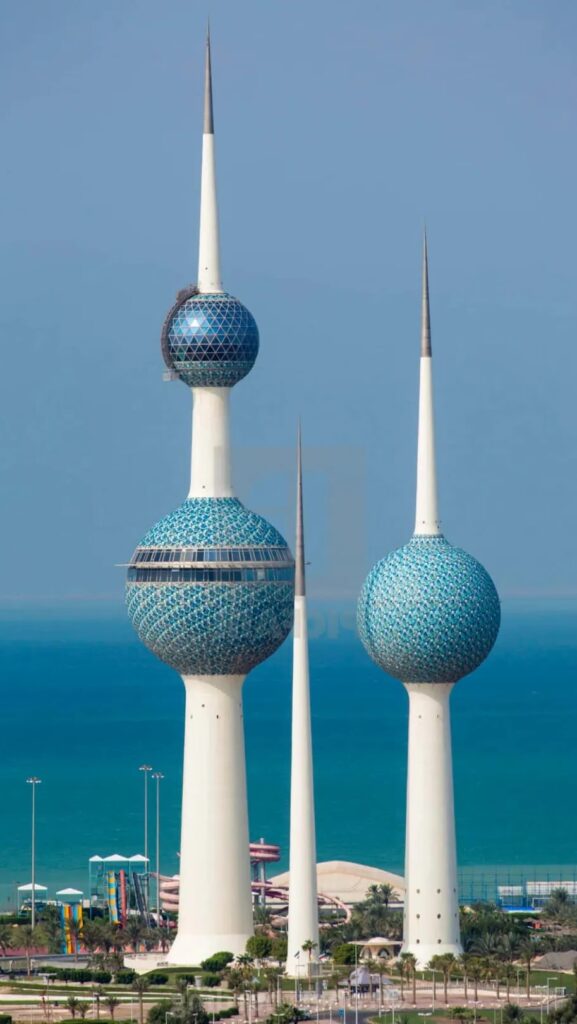
One of Kuwait’s landmark buildings, located along the Gulf Road, just a street away from the Emir’s Palace. The Kuwait Towers consist of three towers: the main tower stands at 187 meters with two large spheres, the middle tower at 147 meters also features a sphere, and the smallest tower at 113 meters serves as a lighting tower. Visitors can take a high-speed elevator directly to the observation deck to overlook the city and the Persian Gulf.
Kuwait National Museum
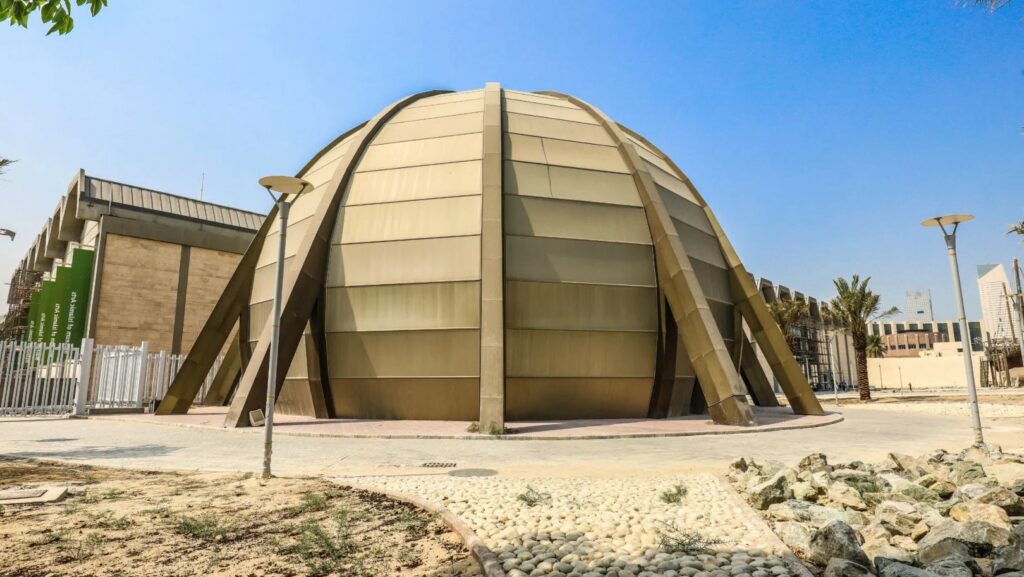
An essential place to learn about Kuwait’s history and culture, the museum displays ancient artifacts, traditional clothing, and handicrafts, offering visitors an in-depth look into Kuwait’s historical and cultural background.
Kuwait Science & Natural History Museum
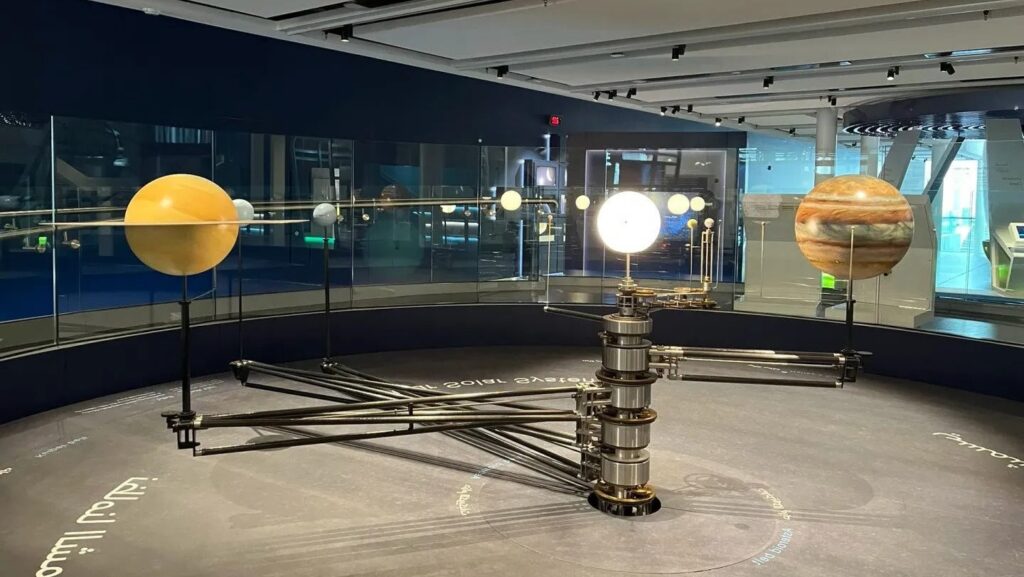
One of the most modern science centers in the Gulf region, located along the Gulf Road. It includes an exhibition hall, an aquarium, a terrestrial life exhibit, and an IMAX theater, providing rich educational content and entertainment experiences for visitors.
Kuwait Water Towers
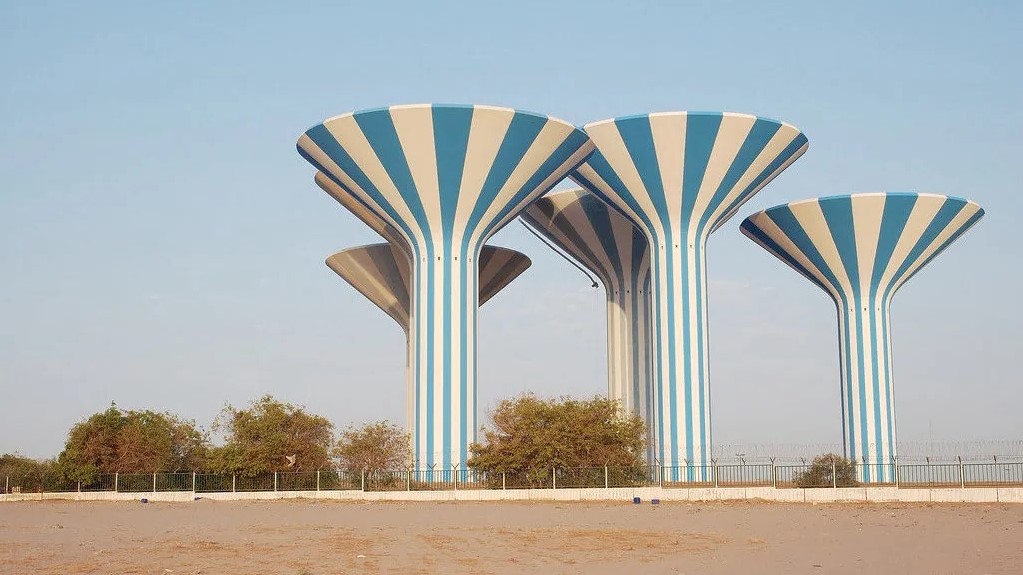
These are mostly cone-shaped water storage towers with a unique structure, soaring into the sky. These towers serve not only as water storage but also as tourist attractions.
Kuwait Liberation Tower
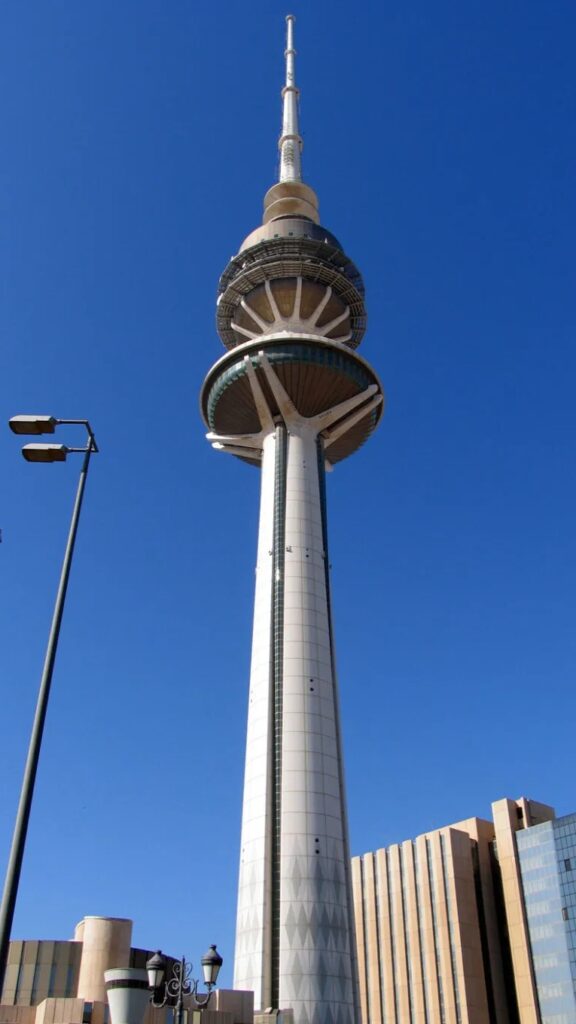
One of the tallest telecommunications towers in the world, standing 40 meters taller than the Eiffel Tower in France. Its towering height and unique design make it an important landmark in Kuwait.
Must-Try Foods
Mashawi
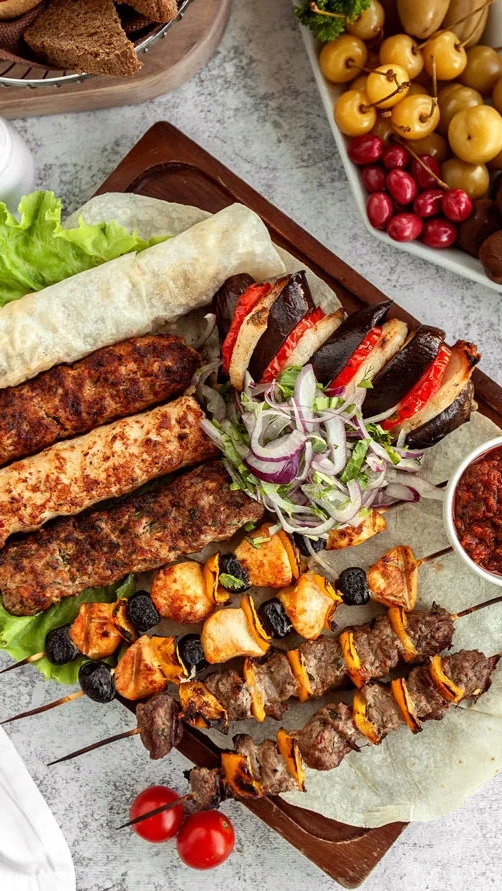
One of Kuwait’s most popular dishes, made from various meats like lamb, chicken, and beef, seasoned with a variety of spices and grilled to perfection. The meat is tender, juicy, and aromatic, usually served with fragrant rice and salad.
Machboos
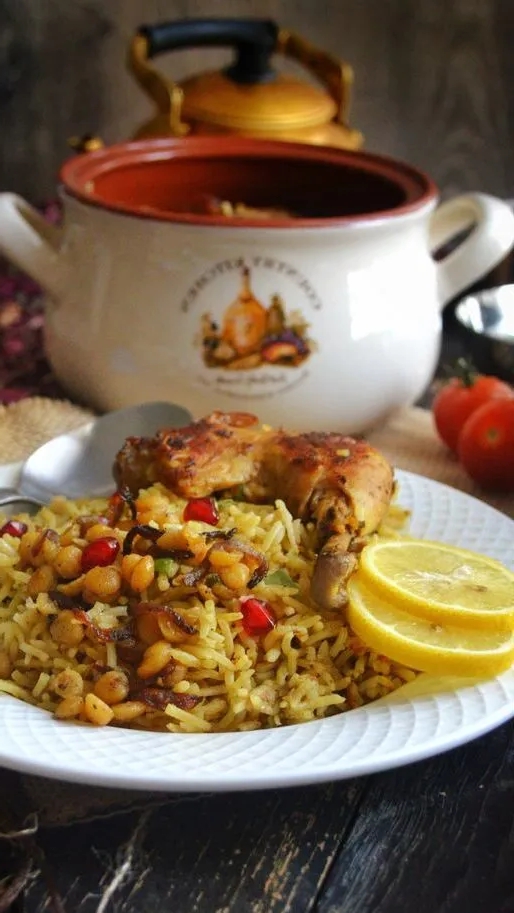
A traditional Kuwaiti rice dish. Rice is cooked with various meats (such as lamb, beef), fish, or seafood, with the addition of cool parsley, lemon, and chili, adding a unique spice and flavor.
Manakish
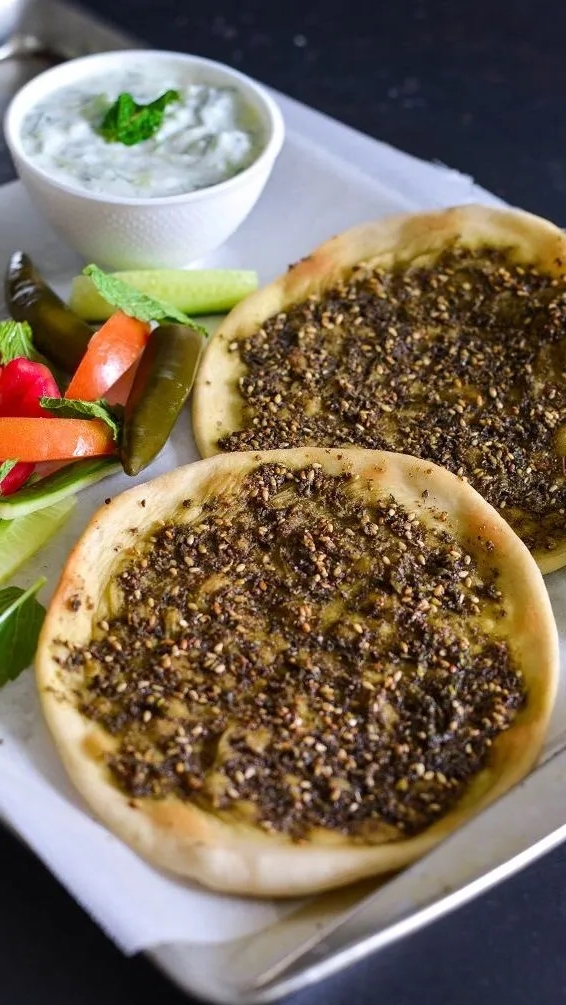
A traditional Arabic breakfast also very popular in Kuwait, made from dough topped with vegetables, cheese, and spices. It has a crispy texture and unique flavor, often chosen by Kuwaitis for breakfast.
Mango Cake
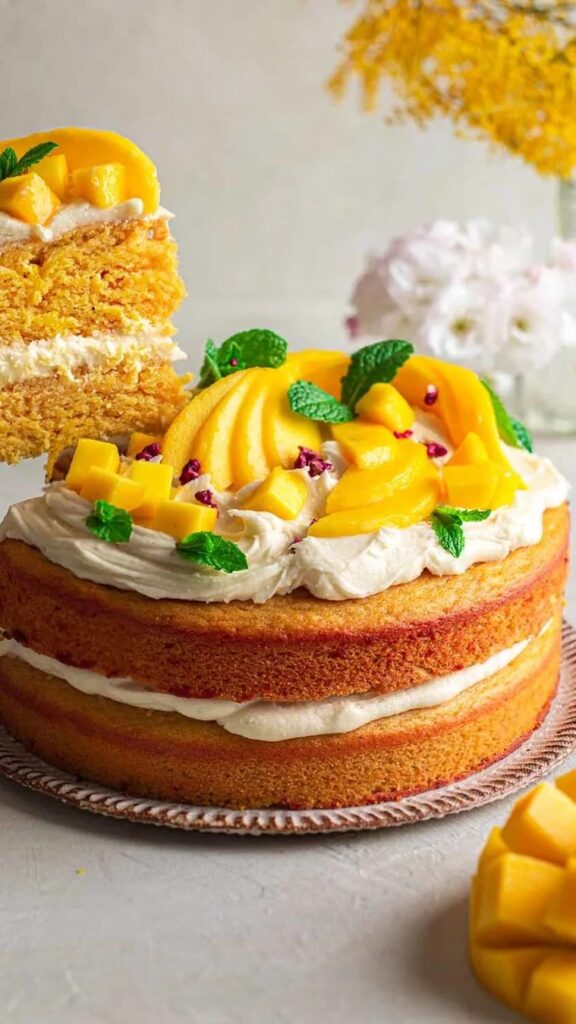
A Kuwaiti specialty dessert. The cake is soft and moist, topped with mango jam and cream, offering a delicate texture, sweet but not cloying, and is one of the favorite sweets among Kuwaitis.
Gahwa
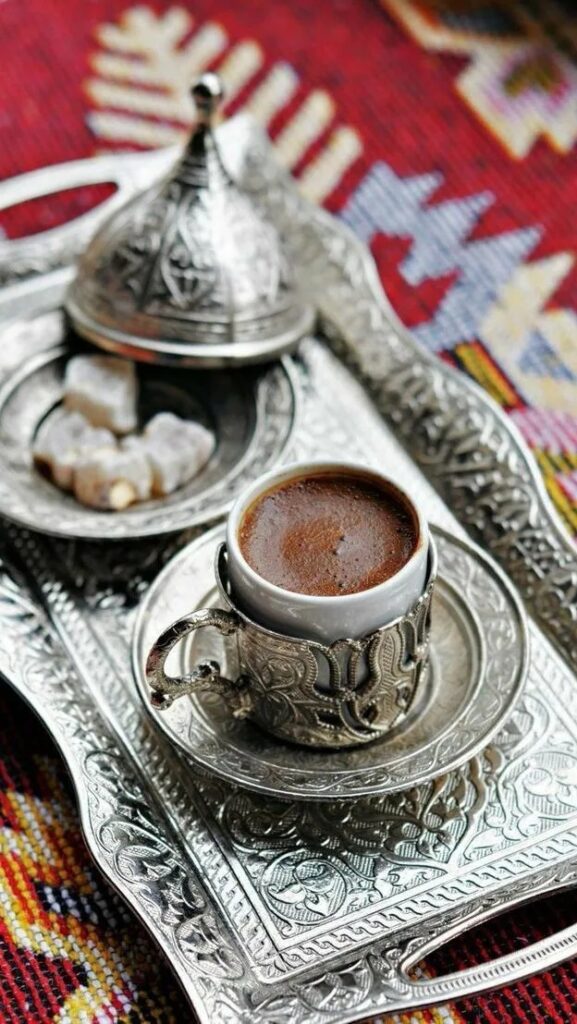
A traditional Kuwaiti beverage, made from ground coffee beans, with a strong aroma and unique taste, an essential drink for Kuwaitis when welcoming guests.
Ma’amoul
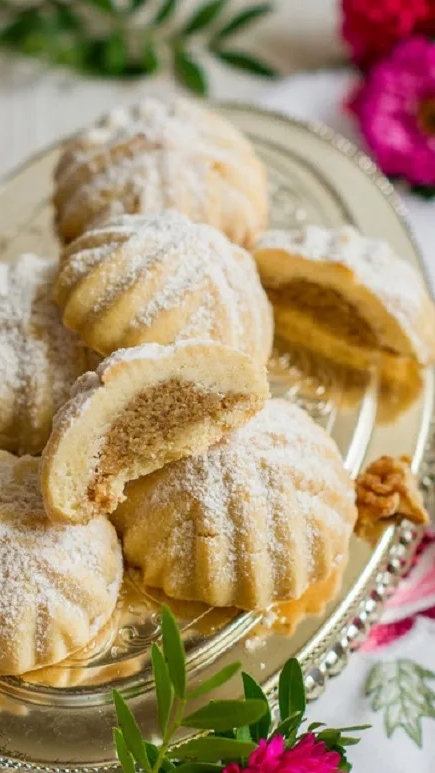
A traditional Arabic cookie made from flour, butter, and nuts. The cookie has a crispy exterior and a soft interior, usually eaten during important festivals and special occasions.
Dolma
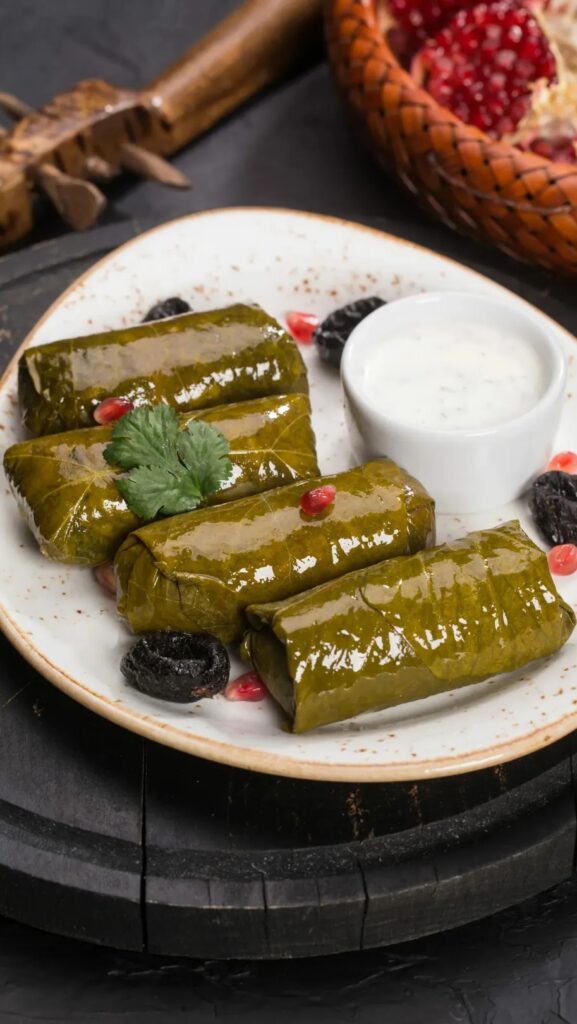
A traditional Middle Eastern dish where grape leaves or other vegetable leaves are stuffed with meat, sometimes including rice and spices, offering a rich taste with the perfect blend of spices and meat filling, one of the traditional dishes favored by Kuwaitis.
Best Time to Visit
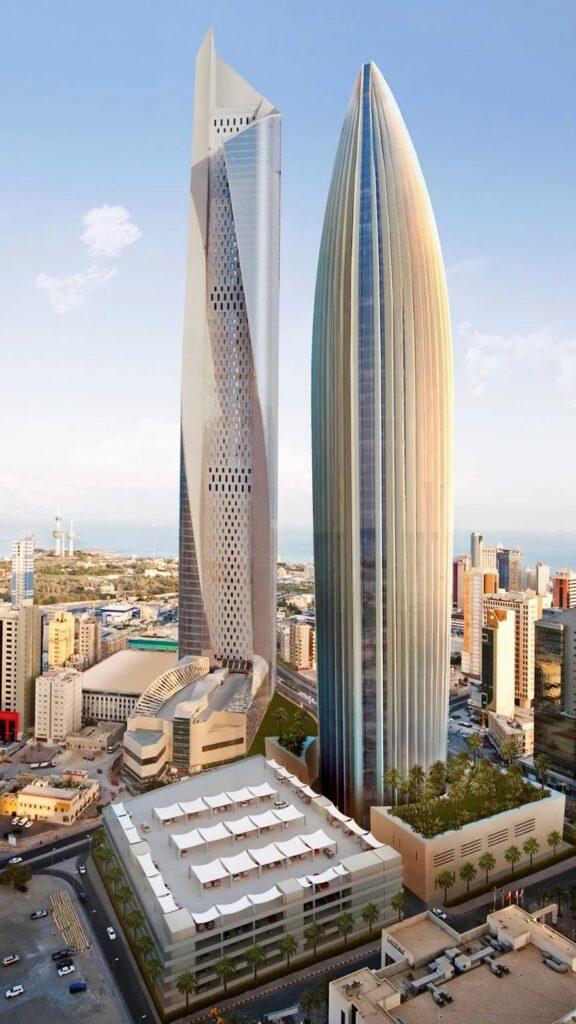
Climate
Kuwait has a tropical desert climate, with long, hot, dry summers where temperatures can reach 51°C, and short, humid, and rainy winters with temperatures dropping to -6°C. Annual rainfall is between 22-177 mm.
Best Travel Season
The best time to visit Kuwait is from November to April the following year. This period covers Kuwait’s mild winter and spring, avoiding the country’s long, hot summer, making it more comfortable for tourists.
Dressing Guide
Summer (May to October)
Due to the extremely high temperatures, light and breathable clothing is recommended, like cotton or linen shirts, T-shirts, shorts, or light dresses.
Avoid dark or tight clothing to reduce the feeling of heat.
Sun protection items are essential, such as hats, sunglasses, and sunscreen, to prevent UV damage.
Winter (November to April)
Daytime temperatures are moderate, but nights can be cooler, so bring warm clothing like jackets, windbreakers, or light sweaters.
Considering possible sandstorms, long sleeves and pants are advised to minimize skin irritation from sand.
For footwear, choose comfortable, breathable sneakers or casual shoes to suit various travel scenarios.
Cultural Customs and Dress Code
Kuwait is a traditional Muslim country, and visitors should respect local customs when dressing.
For Female Visitors
Avoid overly revealing or tight clothing like short skirts, shorts, or tight dresses.
Preferably wear long-sleeved clothing and long pants, or opt for long skirts to cover the legs.
In religious sites or traditional communities, more conservative attire is recommended to show respect.
For Male Visitors
Avoid shorts or overly casual clothing.
Long pants and long-sleeved shirts are more appropriate.
In religious sites, more formal attire like suits or formal wear might be required.
Other Considerations
Comfort and Convenience: Choose clothing that allows for easy movement, avoiding overly complex or cumbersome designs. Also, considering Kuwait’s climate, clothing should be breathable and sweat-absorbent.
Bring Spare Clothing: Due to Kuwait’s potentially drastic weather changes, it’s advisable for tourists to bring extra clothing to adapt to different weather conditions. Moreover, considering possible sandstorm weather, bring dust masks and goggles for protection.
Respect Local Culture: When visiting Kuwait’s religious sites or traditional communities, tourists should pay special attention to their attire to respect local customs and religious beliefs. Avoid wearing overly revealing or controversial clothing to avoid discomfort or offense to local residents.






